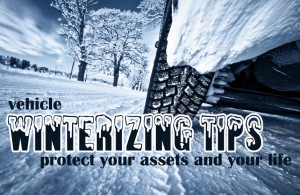 With the winter months approaching, now is the time to get your vehicle prepared for the cold weather. Winterizing your vehicle before temperatures drop is a sensible way to avoid the inconvenience of being stranded out in the cold and with the unexpected expense of emergency repairs. If your vehicle is due for a tune-up, have it done before winter sets in. Winter weather magnifies existing problems such as hard starts, pings, rough idling, stalling, diminished power, etc.
With the winter months approaching, now is the time to get your vehicle prepared for the cold weather. Winterizing your vehicle before temperatures drop is a sensible way to avoid the inconvenience of being stranded out in the cold and with the unexpected expense of emergency repairs. If your vehicle is due for a tune-up, have it done before winter sets in. Winter weather magnifies existing problems such as hard starts, pings, rough idling, stalling, diminished power, etc.
The Nolan County Sheriff’s Office offers the following steps for winterizing your vehicle to give you peace of mind during fall and winter driving:
- Replace dirty filters, such as air, fuel, and PCV. A poorly running engine is less efficient and burns more fuel.
- As the temperature drops below freezing, add a bottle of fuel deicer in your tank to help keep moisture from freezing in the fuel line. Keeping the gas tank filled also helps prevent moisture from forming.
- Change the oil and adjust the viscosity. In order for your engine to run, it needs proper lubrication. Unfortunately, cold weather reduces the oil’s effectiveness. The colder the weather, the thicker the oil gets, and thick oil doesn’t circulate through your engine as easily as thin oil. Consequently, your engine doesn’t get the lubrication it needs during start-up and you’re left with a vehicle that won’t start. To prevent this cold weather headache, change your oil to one that is thinner to begin with. Check the owner’s manual for information on proper viscosity levels for different climates.
- The cooling system should be flushed and refilled as recommended. The level, condition, and concentration of the coolant should be checked periodically. A 50/50 mix of antifreeze and water is usually recommended. This will prevent the coolant in your radiator from freezing. If you want to check the composition of your radiator’s fluid, you can pick-up an inexpensive anti-freeze tester at a local auto parts outlet.
- Cold temperatures can weaken belts and hoses. The tightness and condition of drive belts, clamps, and hoses should be checked regularly for any signs of wear and tear, and replaced if needed.
- The heater and defroster must be in good working condition for passenger comfort and driver visibility.
- Replace old wiper blades regularly. For harsh winter weather, purchase rubber-clad (winter) wiper blades to fight ice build-up. Top off your windshield washer fluid reservoir with a brand of solvent that has a lower freezing temperature.
- Have your battery and charging system checked for optimum performance. Cold weather is hard on batteries and the only accurate way to detect a weak battery is with professional equipment. However, routine care can be performed: To avoid contact with corrosive deposits and battery acid, wear eye protection and protective rubber gloves. Scrape away corrosion from posts and cable connections; clean all surfaces; re-tighten all connections. If battery caps are removable, check fluid level monthly. On newer vehicles, the removal of cables can cause damage or loss of data/codes, so always check your owner’s manual first.
- Inspect all lights and bulbs. Replace burned out interior and exterior bulbs and check headlights for proper aim; periodically clean road grime from all lenses. To prevent scratching, never use a dry rag. Clouded lenses can be refinished by service outlets or by using a DIY kit found in local auto parts outlets.
- Exhaust fumes inside your vehicle’s cabin can be deadly. Have the exhaust system examined for leaks and problems while the vehicle is on a lift. The trunk and floorboards should also be inspected for small holes.
- Worn tires are dangerous in winter weather. Examine tires for remaining tread life, uneven wearing, and cupping; check the sidewalls for cuts and nicks. Check tire pressure once a month, letting the tires “cool down” before checking the pressure. Rotate as recommended. Don’t forget to check your spare, and be sure the jack is in good working condition. If your vehicle is equipped with custom/aftermarket wheels, make sure you have the proper lug-nut tool to remove wheel. Under-inflated tires or poorly aligned wheels makes your engine work harder and thus use excess fuel.
- Have your brakes checked periodically for safety and to prevent costly repairs that can be caused by neglect.
- The transmission is often neglected until a major failure. Routine checks and fluid changes at prescribed intervals can prevent very costly repairs down the line. If equipped with four-wheel drive (4WD), have it checked by a mechanic before winter weather sets in to ensure the system engages smoothly and that the transmission and gear fluids are at their correct level. When working properly, 4WD can provide better traction when driving on snowy and icy roads.
- Stock an emergency kit with a fully charged cell phone and extra car charger, ice scraper and snow-brush, a folding shovel, LifeHammer, tow strap, tire chains, jumper cables, flashlight and extra batteries, roadside flares/reflective triangle, extra clothing, gloves, boots and blankets, candles/matches, bottled water, dry food snacks and first aid kit.